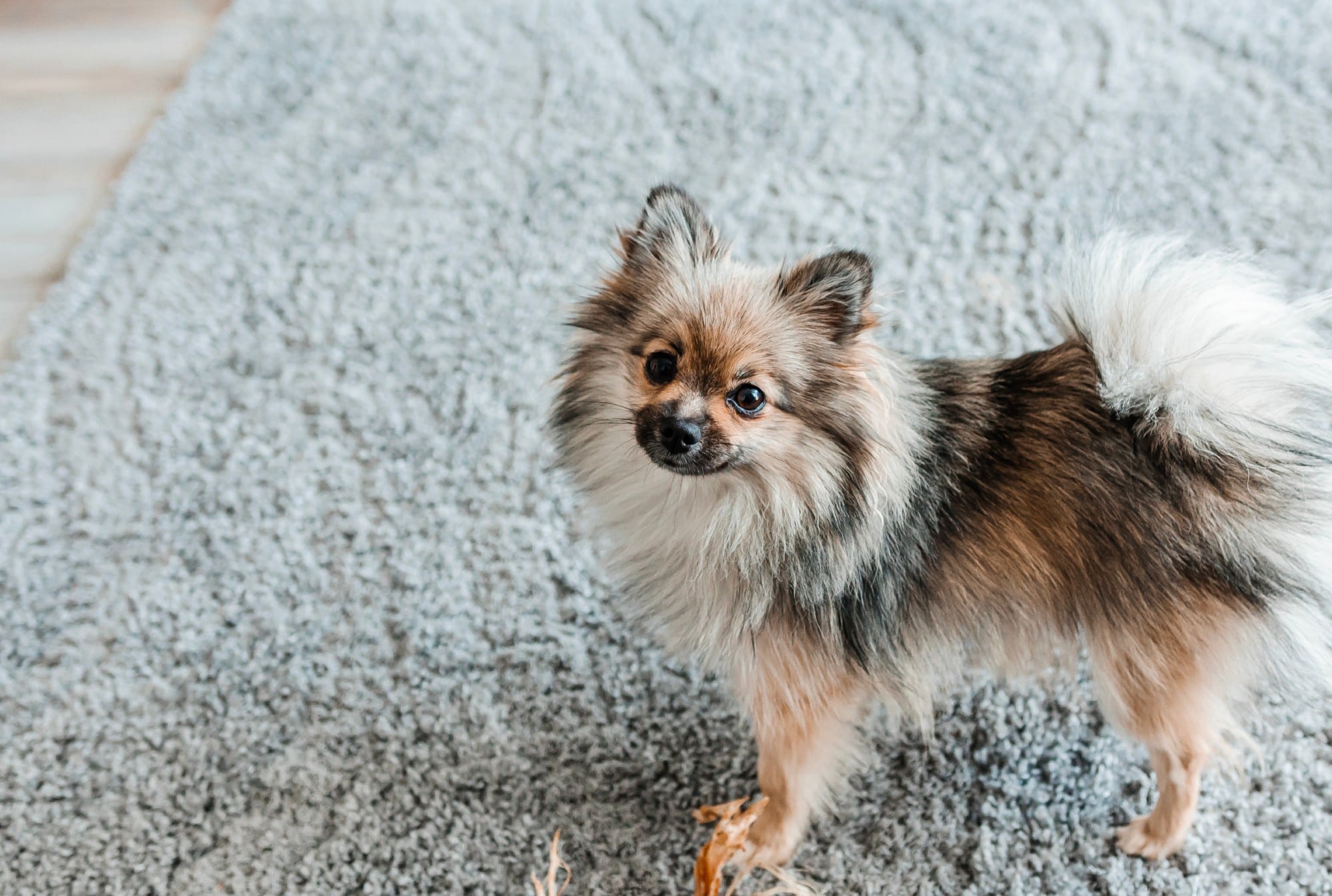Gray muzzles. Cloudy eyes. Difficulty getting up from the floor or finding the tennis ball you just threw. Maybe even a few accidents from a thoroughly housetrained dog. These are all signs that your dog is aging — and that he or she needs you more than ever.
Aging, just like in humans, can bring a number of health concerns. “Like humans, aging dogs face arthritis and joint problems often made worse by being overweight or obese. Their vision and hearing also worsen overtime,” says holistic veterinarian Dr. Babette Gladstein. No matter what the issues are, your senior dogs are depending on you in their golden years.
One of the most common issues in older dogs is arthritis.
If you notice that your dog is limping, walking with stiff joints, reluctant to do things that were previously easy, or licking, chewing, or biting at his legs, your dog may have arthritis. The first order of action is to schedule a vet visit.
Once you have a diagnosis, there will be several options available for treatment. Traditionally, non-steroidal anti-inflammatories, or NSAIDS, are prescribed for pain, but these can have serious side effects.
Relate: The Rules of The Game: How to Keep Your Senior Dog Safe During Playtime
For those not wanting to risk any adverse reactions, there are other options. Alternative veterinary therapies are a fascinating mix of ancient treatments, such as acupuncture and Chinese herbal therapies with futuristic technological advances, such as laser therapy, ultrasound, prolotherapy, and electromagnetic field therapy. A combination of different types of treatments may be recommended.
Here is a breakdown of the most common alternative therapies and what you need to know about them.
1. Physical Therapy
“Physical therapy is often the first recommended form of treatment, which includes stretching the muscles and doing exercises that strengthen and improve their range of motion,” says Dr. Babette. “Many dogs can benefit greatly from regular physical therapy.”
Physical therapy includes massage and manipulative techniques (also known as chiropractic adjustments) to align the skeleton and the joints. This increases blood flow, relieves pressure on nerves, which subsequently alleviates pain. It also helps increase range of motion, which allows your dog to get around easier and more comfortably.
Physical manipulation can also improve the health of the body as a whole, improving cardiovascular function, digestion and respiratory function. By aligning the spinal column, pressure on nerves that regulate the body’s organs is released, restoring proper function and improving your dog’s overall health.
Related: A Vet Explains: 8 Ways to Ensure A Calm and Easy Transition When Adopting A Dog
2. Acupuncture
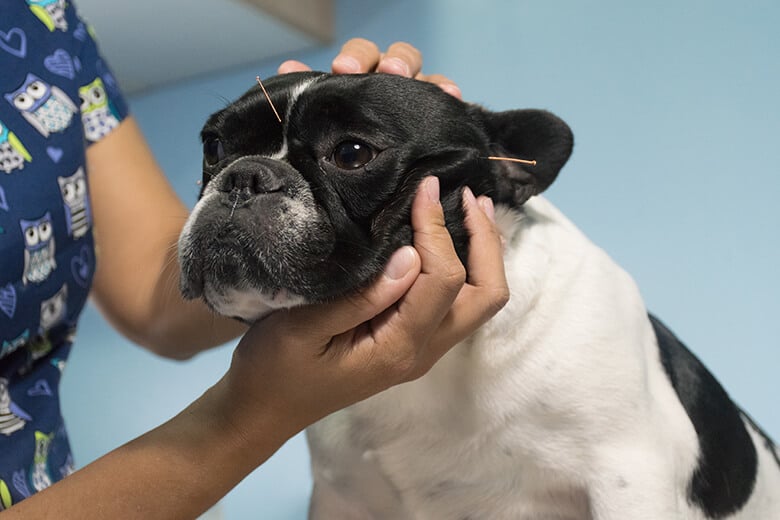
“Acupuncture is a healing art that has been used in China for thousands of years to treat a variety of medical conditions,” says Dr. Rachel Barrack, veterinarian and founder of concierge practice, Animal Acupuncture in New York City. “It is considered the mainstay of traditional Chinese medicine.”
It is based on the idea that diseases and ailments are caused by energy blockage in the body. “Most acupuncture points are located along 14 major channels, which form a network that carries blood and energy throughout the entire body,” says Dr. Barrack.
The process involves acupuncturists inserting fine, sterile needles into points on the body to provide pain relief; stimulate the immune, endocrine, cardiovascular, digestive, and nervous systems; decrease inflammation and increase blood flow. This stimulation helps the body heal itself.
“Acupuncture produces a physiological response,” says Dr. Barrack. “It can also help restore balance between organ systems for optimal health and overall wellbeing. By decreasing inflammation, acupuncture alleviates discomfort associated with inflammatory conditions such as arthritis.”
3. Chinese Herbology
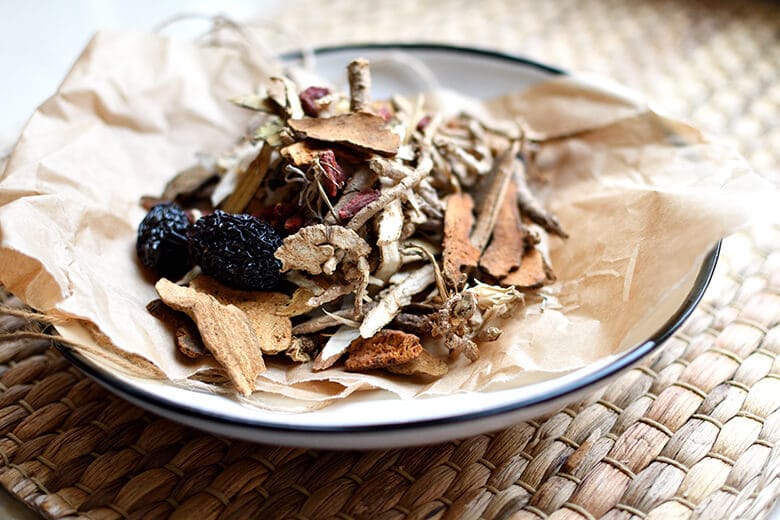
Chinese herbs are often used with acupuncture to help increase the effectiveness. Chinese herbal therapy is thousands of years old and uses medicinal plants that contain a vast variety of chemical compounds. Veterinarians practicing Chinese medicine may use as many as 50 herbs together to treat pain and discomfort resulting from age-related conditions.
Chinese herb therapy is designed to treat chronic conditions such as allergies, kidney and liver failure, skin and coat problems, along with behavioral problems like anxiety. These herbs come in several forms, including capsule, powder and tablet, that are easy to administer and to digest.
“Although cultivated from nature, Chinese herbs should always be thought of as medicine, and there is no ‘one-size-fits-all’ herbal formula for dogs with arthritis and other conditions,” says Dr. Barrack. “Herbs are prescribed depending on the individual needs of the patient.” But don’t try this on your own; always go to a vet certified in Chinese herbology.
Related: Are Chinese Herbs the Next Big Thing in Treating Painful Conditions That Affect Your Dog?
4. Prolotherapy
Pioneered in sports medicine for the world’s elite human athletes, prolotherapy is an alternative orthopedic therapy that works rapidly to manage your aging dog’s pain and strengthen and stabilize the joints. “By administering controlled injections of natural proliferating agents, like dextrose mixed with lidocaine, into the damaged joint, it triggers a slight inflammatory response,” explains Dr. Babette. “Then the body’s natural healing mechanism kicks in, stimulating the formation of healthy new ligament and tendon tissues.”
5. Platelet Rich Plasma (PRP) and A-Cell
This regenerative technology can enhance the effects of prolotherapy. PRP, which is protein rich platelets, and A-Cell, which are stem cell equivalents, can provides relief for a dog’s hip and knees, increasing their mobility and decreasing their pain, says Dr. Babette. “The cell therapy uses your dog’s own immune response to activate the same processes the body would normally use, but amplified many times over.”
6. K-Laser Therapy
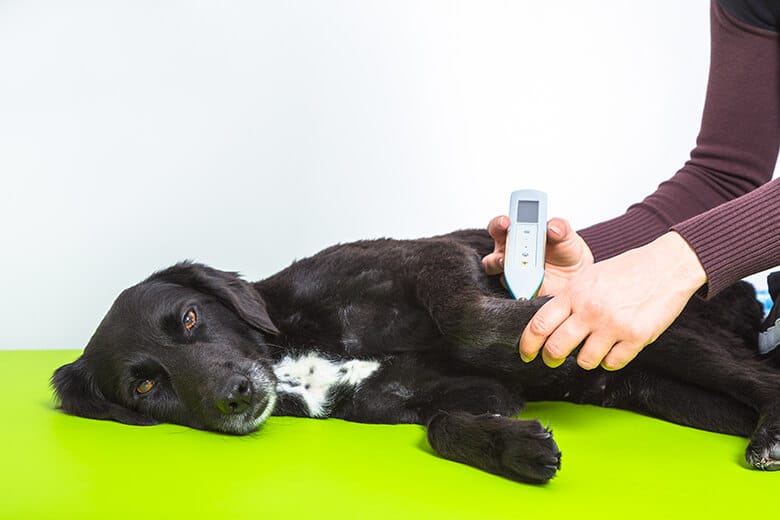
The K-Laser is a high-energy therapeutic laser, which is non-invasive, gentle, and extremely effective in healing stressed or damaged tissue, says Dr. Babette. “This naturally pain free treatment can alleviate pain, reduce inflammation, and promote growth tissue. It has also been known to improve overall health and comfort for dogs.”
During the process, the therapy is directed at the source of pain. It feels like a warm sensation, says Dr. Babette, but notes, it isn’t painful. He adds that many dogs fall asleep during the process. Using the laser may result in shorter recovery time, greater range of motion and a decrease in muscle spasms.
7. Ultrasound Therapy
Ultrasound therapy uses high-energy sound waves applied directly to injured tissue to provide immediate relief and eventual healing. The area that’s damaged absorbs the sound energy and then radiates heat, which stimulates collagen fibers, accelerating tissue and tendon growth and improving strength. It can be used to treat a variety of conditions and injuries, including tendon and ligament injuries, muscular pain, scar tissue, and swelling.
8. Homeopathic Remedies
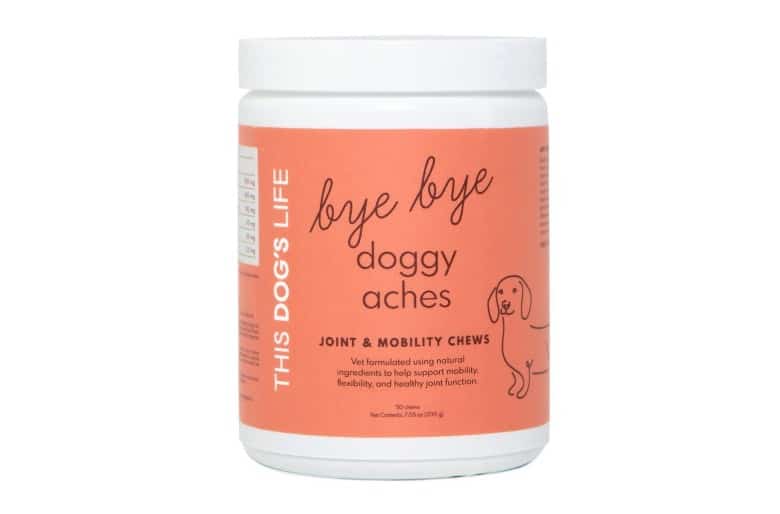
SHOP NOW
Homeopathic medicine uses natural substances to stimulate the body’s natural healing process. It is based on the belief that “like cures like,” or substances that would cause particular symptoms in large doses, may stimulate the body’s immune system when given in a very diluted dose. These remedies, derived from plant and animal materials and minerals, and prescribed to treat the individual dog, may be extremely effective.
“There are also some lifestyle modifications owners can make at home to best help their aging dog,” suggests Dr. Barrack. “Continue exercising to help your pet maintain a healthy body weight and to keep the joints fluid and flexible.”
Changing your dog’s diet to exclude any inflammatory ingredients, such as grains and corn, is also a vital step, says Dr. Babette. “Either homemade food or nutritionally rich dog food are the best to feed your aging pup. Supplements like turmeric, glucosamine and Adequan are also beneficial without any harsh side effects.” You can also look at CBD oil.
It’s always important to consult with a veterinarian. You can go to one certified in both Western and alternative therapies to help you decide which will benefit your senior dogs and keep them healthy and happy long into their golden years.
Related: A Holistic Veterinarian Shares What We Should All Know About Dog Nutrition



















